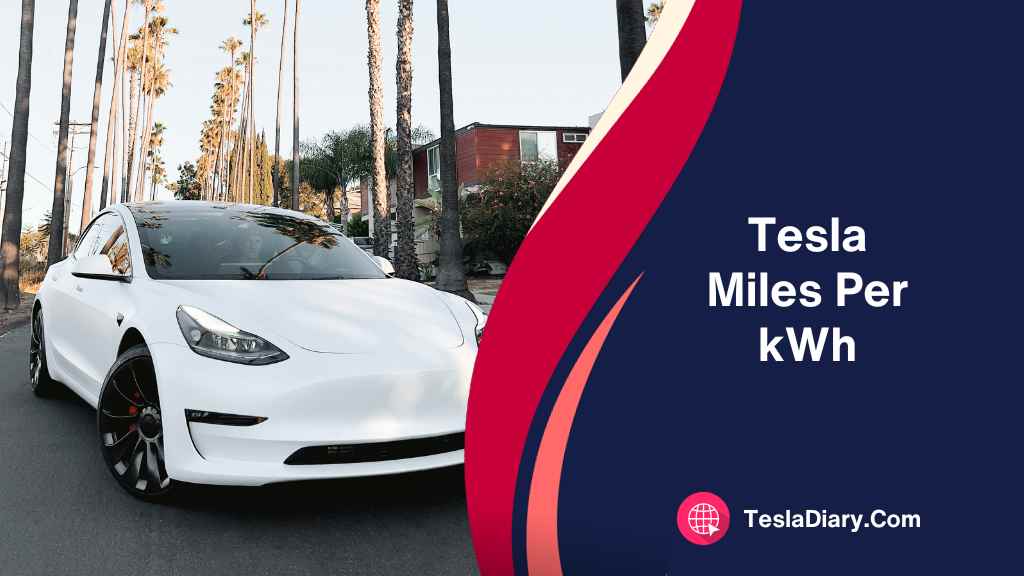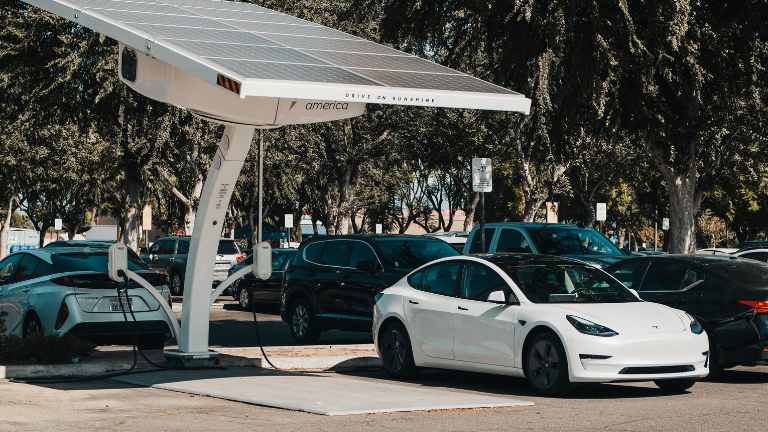In a world increasingly powered by electrons rather than fossil fuels, Tesla has become a symbol of innovation, performance, and sustainability.
As the automotive industry hurtles toward an electrified future, one question resonates with drivers and environmental enthusiasts alike: How many watts does a Tesla really use?
Buckle up, as we embark on an electrifying journey to uncover the secrets of Tesla’s power consumption.
From the sleek Model 3 to the powerful Model X, we’ll unravel the mysteries, dive into the data, and rev up the insights to understand what fuels the heart of these electric beasts.

Power Consumption in Teslas
To comprehend the power consumption of Tesla vehicles, one must first grasp the concept of power consumption, which Tesla measures in terms of “kilowatt-hours per 100 miles” (kWh/100 mi).
These metrics quantify the amount of electrical energy, expressed in watt-hours or kilowatt-hours, a Tesla consumes to travel a specific distance, typically a mile or 100 miles.
Now, let’s explore the typical power consumption figures for various Tesla models. The following table provides an overview of energy consumption for some of the most popular Tesla models:
| Tesla Model | Power Consumption (kWh/100 mi) | Miles per kWh |
|---|---|---|
| Model 3 | 26 – 32 | 3.3 – 4.2 |
| Model S | 28 – 38 | 2.6 – 3.6 |
| Model X | 34 – 42 | 2.3 – 3.2 |
| Model Y | 25 – 29 | 3.2 – 4.0 |
It is essential to note that these figures are approximate averages and can vary based on factors such as the specific vehicle configuration, driving conditions, and individual
Factors Influencing Tesla’s Power Consumption
Understanding the nuances of what affects Tesla’s power consumption is crucial for Tesla owners and those considering making the switch to electric vehicles. Let’s dive deeper into the various factors that influence the power consumption of a Tesla, enriched with more detailed insights and data.

1. Tesla Model
Tesla’s lineup offers a range of electric vehicles, and each model has its own unique energy efficiency characteristics. Here, we’ll explore the power consumption nuances of some of the popular Tesla models with additional data:
– Tesla Model 3
The Model 3, often touted as the most energy-efficient Tesla, typically consumes between 26 and 31 kWh per 100 miles. So, about 3.3 – 4.2 miles range per kWh power. This remarkable efficiency is attributed to its streamlined design and comparatively lower weight.
– Tesla Model S
The Model S, known for its luxury and performance, exhibits slightly higher power consumption compared to the Model 3. Its energy consumption typically falls in the range of 28 to 38 kWh per 100 miles. Dividing that, you get a range between 2.6 and 3.6 miles per kWh.
– Tesla Model X
The Model X, Tesla’s all-electric SUV, boasts versatility and space but consumes slightly more energy than the Model S. Its power consumption ranges from 34 to 42 kWh per 100 miles. Model X miles per kWh is between 2.3 and 3.2. The larger size and increased weight of the Model X contribute to this variance.
– Tesla Model Y
The Model Y, a more recent addition to the Tesla family, aligns closely with the Model 3 in terms of energy efficiency. It typically consumes between 25 and 29 kWh per 100 miles (3.2-4.0 mi/kWh), making it an attractive option for those seeking a balance between size and efficiency.
2. Driving Conditions
Driving conditions have a profound impact on power consumption, and data reveals some interesting trends:
– Highway vs. City Driving
Data analysis suggests that Tesla vehicles tend to be more energy-efficient during city driving conditions compared to highway driving.
This is because highway driving typically involves higher speeds and more aerodynamic drag, leading to increased power consumption. On highways, power consumption can rise by up to 20% or more compared to city driving.
– Extreme Weather
Extreme weather conditions, be it sweltering summer heat or freezing winter cold, can significantly affect power consumption.
Data indicates that extreme heat can lead to a 15% or more increase in power consumption due to the need for air conditioning.
Similarly, during frigid temperatures, power consumption can increase by 20% or more as the vehicle employs additional energy to heat the cabin and maintain battery temperature.
– Hilly Terrain
Tesla owners in areas with hilly terrain may experience variations in energy consumption.
Climbing steep hills demands more power, while regenerative braking during descents can offset some of that energy use. Overall, the net effect can lead to fluctuations in power consumption.
3. Driving Habits
A data-driven analysis indicates that rapid acceleration and frequent hard braking can lead to increased energy consumption.
On the contrary, adopting a smooth and gradual driving style, with gentle acceleration and regenerative braking, can significantly improve energy efficiency and reduce power consumption.
4. Climate Control
Tesla’s climate control system plays a vital role in power consumption:
– Air Conditioning (A/C) and Heating
Using the air conditioning or heating system can notably affect power consumption. Data highlights that running the A/C in hot weather conditions can increase power consumption by 10% or more.
Similarly, heating the cabin during cold weather can lead to an even greater energy consumption increase of 20% or higher.
5. Battery Health
As Tesla batteries age, they may gradually degrade, impacting energy efficiency. A well-maintained battery in good condition may only exhibit a minimal decrease in efficiency over the years, while a severely degraded battery can experience a more substantial drop in energy efficiency, resulting in higher power consumption.
Bottom Line
The power consumption of a Tesla is a multi-faceted subject influenced by a myriad of factors, including the specific Tesla model, driving conditions, and personal driving habits.
While precise power consumption figures may vary widely, Tesla vehicles consistently exhibit energy efficiency superior to that of traditional gasoline-powered cars.
By comprehending the data-driven factors discussed in this article and meticulously monitoring your Tesla’s energy usage, you can harness the full potential of electric driving.

